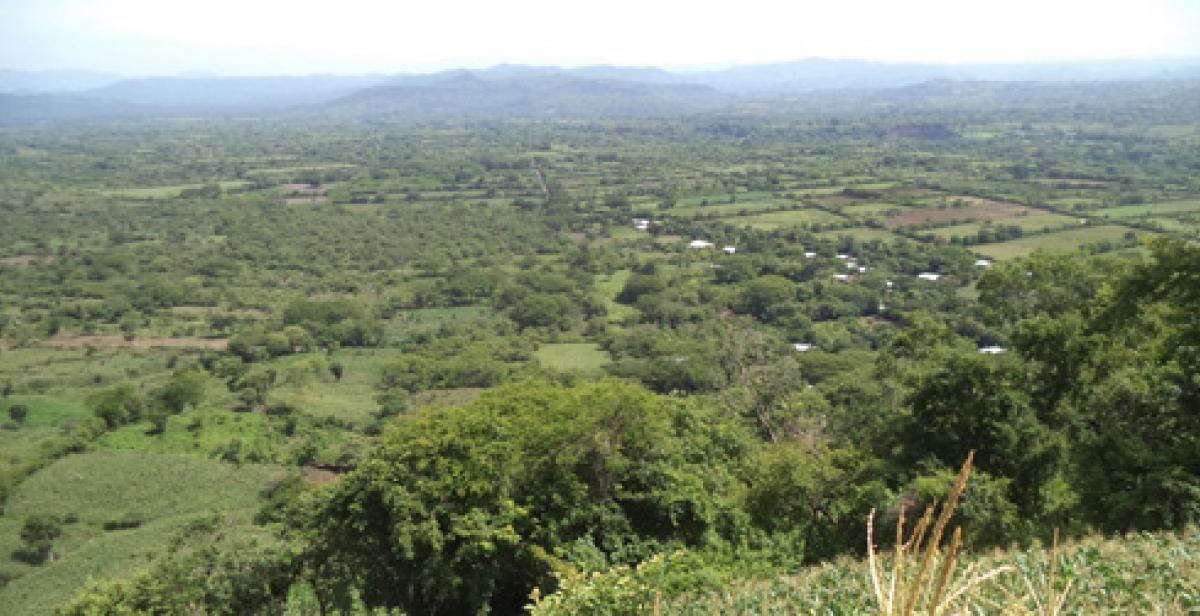In the year 1990, the UN finally began peace negotiations concluding a civil war that had claimed the lives of 70,000 Salvadoreans and had torn a nation in two. This proved to be a momentous moment for many exiled Salvadoreans as it resulted in repatriations back to their homeland. 500 families were involved in this movement from places such as San Antonio, Intibucá and Honduras, who all came together to discover the unknown province of Gualcho in the department of Usulután.
Since arriving on March 5th 1990 and celebrating the official end of the civil war on January 16, 1992 in the form of The Chapultepec Peace Agreement, the refugees have wasted no time in developing their Nuevo Gualcho away from the common gang culture. A school, library, youth centre and sports field are examples of things that play a major role in the day to day life of the community. When looking from afar, you can see that it still has so much more to offer too.
As you climb the Mirador trail in amongst the wilderness, the breath-taking view of Nuevo Gualcho awaits. After experiencing the shelter of the trail, the freedom of the final destination is truly valued as you stand at eye-level with the mountains in the distance. The peaceful atmosphere results in very few conversations as everyone just stares at the full panoramic of the lake and the Gualcho community.
During the journey back down from the viewpoint, both the history and development of Nuevo Gualcho can be appreciated when casting your sights on the Hacienda and the newly built Centro de Acopio. Taking this view in at such a height allows you to acknowledge how far this community has come since its forming in 1990, but also how it is still so relatively unknown in the important history of Central America.
The Hacienda, previously known as the ´El Gualcho ranch´, hosted one of the first battles led by Francisco Morazán on July 6th 1828 that ended with triumph over federal troops. Francisco Morazán had the political vision of combining Central America as one nation. Following on from triumphs such as this, he was able go on to become President of the Federal Republic of Central America from 1830 to 1839. In terms of Central American history and its previous collaboration, Francisco Morazán remains the famous figure who relates to all of the tales told. The experience he had in Gualcho specifically can be found in his battle day diary entry. It is here where he describes his pre-battle predicament, before going on to explain the victory where he emphasizes the mental toughness of his supporters:
“Enthusiasm that produced in all the soldiers, the heroism of these brave Hondurans, exceeded the number of the enemy.”
Situated opposite this historical landmark is the recently built Centro de Acopio, which adopted a distinctive eco-friendly approach during its construction. With the help of past and present, national and UK Progressio volunteers, the manufacturing process solely included eco-friendly materials that also contributed to resolving the community litter problem. 1300 plastic bottles were picked up off the streets, filled with litter and sand and created the main structure of the building. It is then covered using a mixture of straw, sand and clay which is then finally coated with natural materials that produces the painted finish. In the coming years, this will be the main site that gathers the recyclable materials to be re-used or alternatively sold on to locals for a profit-margin, which clearly did not exist before the implemented promotion of recycling.
The people here have a desire to express their community history and this is complimented by the effort and commitment towards the aim of a more sustainable future. An attraction that shows promise in enticing tourists is the Centro de Artisania building, that is also made up of eco-friendly materials and was built by the previous cycle of Progressio volunteers. Recyclable materials are accumulated at the Centro de Acopio and then at the Centro de Artisania crafts and gifts will be made from these. Innovative pieces such as jewellery and ornaments will be available to purchase in the proposed tourist shop, with the youth of Nuevo Gualcho entirely involved in this creation process.
Increasing the combination of community history, natural beauty and the uniqueness of eco-tourism that Nuevo Gualcho has to offer, is the tranquil yet exciting environment of the Posa. The presence of a hand-made rope swing that swings you parallel with the crashing waterfall and the communal area of rocks complete the perfect setting that is loved by so many. When taking a break for observation, further development in the surroundings of this natural treasure, by the current cycle of Progressio volunteers can be equally appreciated. With the use of 50 plastic bottles and the same eco-friendly technique, a seating area has been created that is situated in a prime position to take in the Posa atmosphere. The construction of the entrance steps also provides a major improvement in terms of accessibility and also helps with attracting tourists to the area.
Day to day work in the community is undoubtedly showing signs of evolution. The youth of Nuevo Gualcho are providing the fuel for this engine of development with weekly meetings arranging workshops for the promotion of Nuevo Gulacho’s history, natural beauty and eco-friendly future. However, the constant challenge they are faced with is just simply becoming recognized by the tourists they so desperately desire. For now, it is just a case of only time will tell if the branding of this community as a tourist destination is a success. But having experienced it for myself, I have no doubt in saying that the future is surely bright for ‘New’ Gualcho and its people.
Written by ICS Volunteer Phil Taylor



